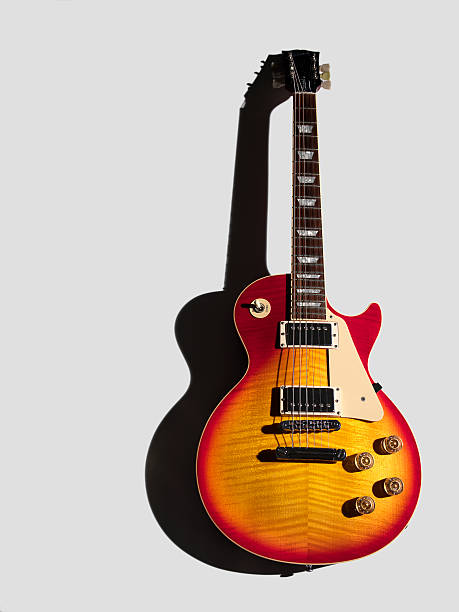Customising your guitar is a great way to personalise your instrument and enhance its performance.

Whether you want to improve its sound, playability, or aesthetics, there are plenty of modifications to consider. This guide will walk you through popular guitar modifications and how they can transform your instrument.
1. Upgrading pickups
Pickups play a significant role in shaping your guitar’s tone. Swapping out your stock pickups for higher-quality ones can dramatically improve your sound. Common options include:
- Single-coil pickups: Known for their bright and clear tone, ideal for genres like blues and funk.
- Humbuckers: Offer a thicker, warmer sound, perfect for rock and metal.
- P90s: A middle ground between single-coils and humbuckers, with a raw, punchy tone.
Choose pickups that suit your playing style and the type of music you enjoy.
2. Installing locking tuners
Locking tuners make string changes faster and help keep your guitar in tune, especially when using a tremolo system. They’re a practical upgrade for players who gig frequently or use alternate tunings.
3. Changing the nut
The nut affects your guitar’s tone and playability. Replacing a plastic nut with one made of bone, graphite, or Tusq can improve sustain and tuning stability. A properly cut nut also ensures better intonation and easier string bending.
4. Adding a tremolo or vibrato system
If your guitar doesn’t have a tremolo system, adding one can expand your creative possibilities. Popular options include the Fender-style tremolo and the Floyd Rose locking system. Be aware that installing a tremolo may require professional routing.
5. Upgrading the bridge
The bridge is another key component that influences tone and sustain. Options include:
- Fixed bridges: Provide excellent tuning stability and sustain.
- Tremolo bridges: Offer more expressive capabilities for techniques like dive bombs and vibrato.
Consider your playing style when choosing a bridge upgrade.
6. Replacing pots and switches
Upgrading the potentiometers (pots) and switches in your guitar can enhance its tonal control and reliability. Higher-quality components ensure smoother volume and tone adjustments and reduce crackling or signal loss.
7. Swapping out hardware
Replacing hardware such as strap buttons, knobs, and tuning pegs can give your guitar a fresh look. Consider installing strap locks to secure your guitar during performances.
8. Customising the finish
If you want to make a bold statement, consider refinishing your guitar. This could involve:
- Painting: Create a custom colour or design.
- Adding decals: A quick and removable way to personalise your guitar.
- Relic’ing: Give your guitar a vintage, worn look.
Refinishing requires skill, so consult a professional if you’re unsure.
9. Adjusting action and intonation
While not a modification in the traditional sense, setting up your guitar for optimal action and intonation can make a huge difference in playability. This involves adjusting the truss rod, bridge height, and string length to suit your preferences.
10. Experimenting with strings
Changing string gauge or material can alter your guitar’s feel and tone. For example:
- Lighter strings: Easier to bend and play, suitable for lead guitarists.
- Heavier strings: Offer more volume and stability, ideal for rhythm playing and drop tunings.
Guitar modifications allow you to tailor your instrument to your unique needs and preferences. Whether you’re upgrading pickups, installing locking tuners, or customising the finish, each modification brings new opportunities to explore your sound and style. Start with small changes and build up to more complex projects as you gain confidence. With the right upgrades, your guitar can become a true reflection of your musical identity.



